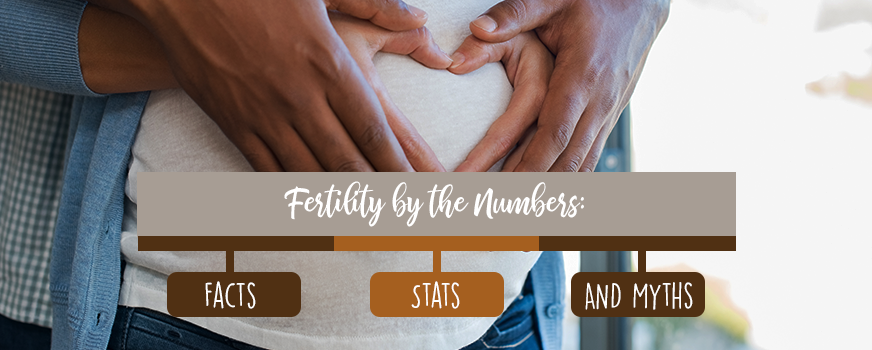
If you’re struggling with infertility, you’ve probably felt all the associated emotions – anger, grief, frustration, stress, and even hope. You’re tired of riding an emotional roller coaster, and you’re ready to replace all the ups and downs with one steady feeling – determination.
If you’re determined to not let infertility steal your dreams of having a family, then arm yourself with information! Knowledge is power, and the more you know about infertility, the better your chances of beating it. Understanding the facts and figures of fertility helps decrease the fear and makes it clear that infertility is a common problem that is far from hopeless.
The following statistics present a quick fertility 101 that will leave you feeling less frustrated and less alone. For a visual summarization and a quick reference guide to share with friends and family, check out this infographic detailing the top misconceptions about fertility.
Infertility Facts
Infertility is More Common than You Think
One in eight couples has had trouble getting pregnant or keeping a pregnancy. Almost 12% of women (7.4 million) have received fertility treatment during their lives. Fertility knows no boundaries and can affect anyone. Learn about celebrity infertility experiences as they share their stories.
Infertility is Not Final
Contrary to what you may have heard, infertility is not definite. Of the women who seek medical treatment for infertility, 60% eventually give birth. With the assistance of a supportive doctor you can learn more about fertility hormones and the various procedures available to you!

“Low Fertility Rate” News Stories Aren’t a Cause for Concern
While some news sources have been breaking stories that say fertility in the U.S. is at its lowest point in decades, this isn’t something to fear. Low fertility rates may indicate that more men and women are waiting until they are older to have children or are choosing a career over a family. This does not mean that there is an infertility epidemic.
Age Matters
Women are most fertile in their 20s, and after age 35, fertility declines. By the time a woman reaches the age of 40, she has only a 5% chance of getting pregnant each month. Infertility treatments can work for older and younger women, though they are more successful in younger women. About 40% of IVF treatments result in a live birth for women under 35. If you choose to use donor eggs rather than your own eggs, you have a better chance of a live birth after age 35.
Infertility Myths
Myth: “You shouldn’t have to ‘Try’ to get Pregnant”
Truth: If you and your partner are between the ages of 29 and 33, you have a 20-25% chance of conceiving each month. A little more than half (60%) of couples will conceive without medical assistance after six months of unprotected sex.
Myth: Fertility is a “Women’s” Problem
Truth: About one-third of infertility cases can be traced back to the woman. Another one-third can be attributed to male infertility.The final third are caused by a combination of issues suffered by both partners or are unexplained.
Myth: Infertility is Final
Truth: Contrary to what you may have heard, the opposite is true. Of the women who seek medical treatment for infertility, 60% eventually give birth.

Myth: “Low Fertility Rate” News Stories are a Cause for Concern
Truth: While some news sources have been breaking stories that say fertility in the U.S. is at its lowest point in decades, this isn’t something to fear. Low fertility rates may indicate that more women are waiting until they are older to have children or are choosing a career over a family. This does not mean that there is an infertility epidemic.
Myth: Age Doesn’t Matter
Truth: Women are most fertile in their 20s, and after age 35, fertility declines. By the time a woman reaches the age of 40, she has only a 5% chance of getting pregnant each month. Infertility treatments can work for older and younger women, though they are more successful in younger women. About 40% of IVF treatments result in a live birth for women under 35. If you choose to use donor eggs rather than your own eggs, you have a better chance of a live birth after age 35.
Infertility is scary, frustrating, and infuriating, but knowledge is power because it fuels determination. Fight infertility with a knowledge qualified, compassionate infertility doctor, and a hard working team that cares about you! Book an appointment at Red Rock Fertility Center to discuss fertility treatments further.



